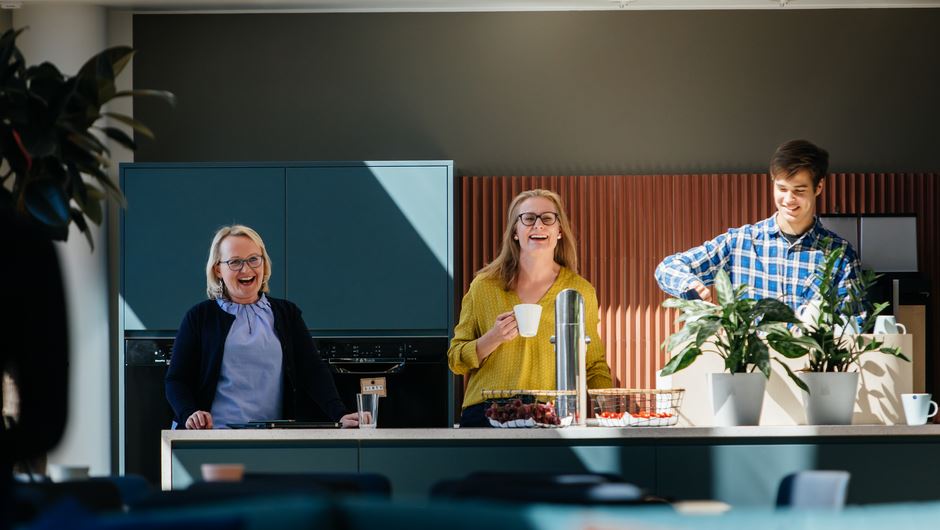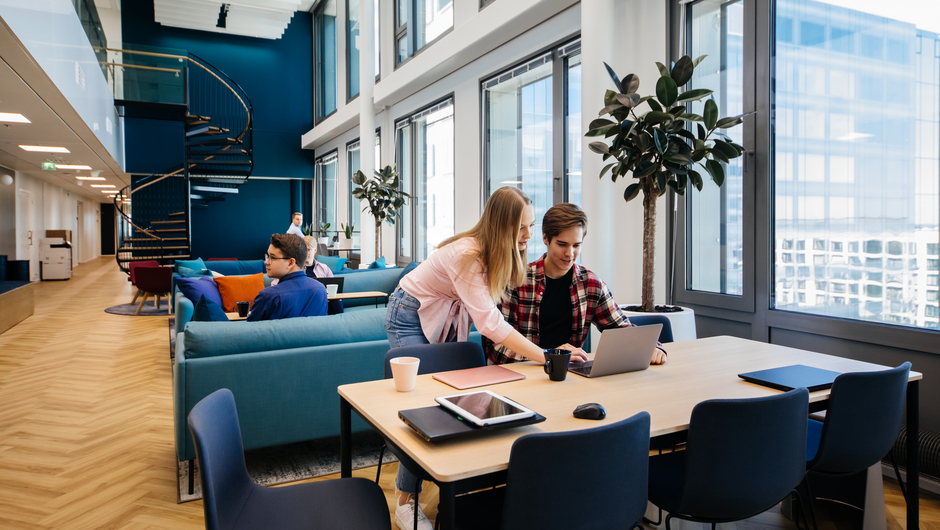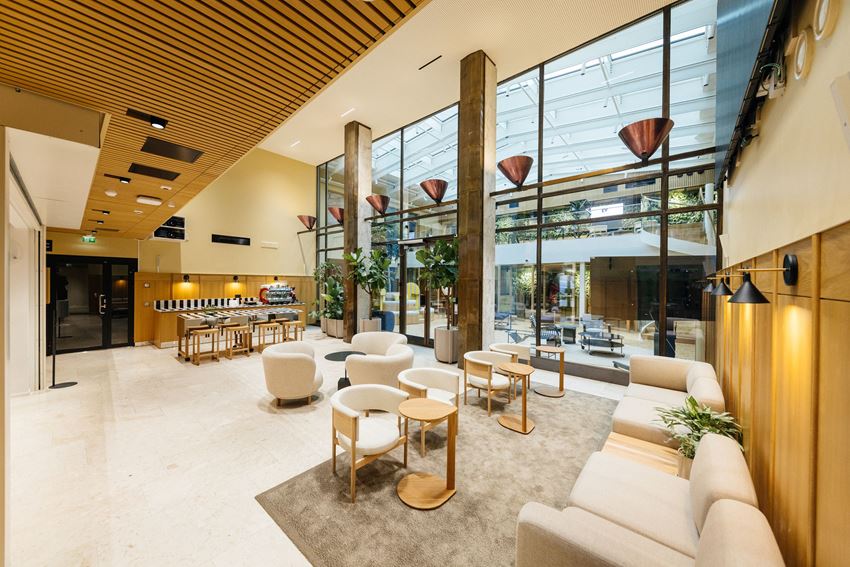Sustainable data centers as a service
- Work
- Offices
- Future of Work
- 9/13/2021
Why return to the office?
What will it be like to work at the office after a long period of remote work? The Next Generation Work survey and Helsinki Think Company’s experiences shed light on the expectations of future talents towards working at the office.

Office work has changed. The Next Generation Work survey conducted by YIT in spring 2021 indicates that on average, respondents want to work remotely 60 per cent of their time. What will the remaining 40 per cent of working hours at the office be like? And why is it a good idea to return to the office?
“I find that returning to the office is closely linked to the social side of things. Pacing the work and taking breaks is easier when people are in the same space, at least partly. Many also find it easier to focus when there is external pressure and when they see that others around them are also working,” says Rosa Salmivuori, CEO of Helsinki Think Company, about the thoughts she and her team have about returning to the office.
Helsinki Think Company is the entrepreneurship society of the University of Helsinki that applies academic insights in practice and promotes an entrepreneurial mindset as well as entrepreneurial and working life skills. The coworking premises located on four university campuses are a central part of the Think Company’s operations. They are used by university staff and students as well as entrepreneurs alike, or rather were used, since the premises have mostly been closed since spring 2020 due to the COVID-19 pandemic.
More meaningful work pulls people into the office
According to the Next Generation Work survey, the respondents who found their work the most meaningful were the most willing to return to the office and work remotely less. A sense of meaning – what work means to you and what you get from it – is an important part of work. We spend a third of the day working, so it’s only natural to want to have a good reason for working.
The importance of work content is strongly present at Helsinki Think Company as well, where the majority of employees are young, talented people.
“We work hard to achieve our common goals and aim at creating a working community reflecting our values. For example, the entire team participates in the shaping of the strategy each year, which, in its part, adds meaning to work,” Salmivuori explains.
The Next Generation Work survey also brought up that working together and learning from a more experienced colleague was the most popular way of learning (64 per cent of the respondents). In addition to creating motivation and providing encouragement, sharing experiences and learning together also strengthen a sense of togetherness and meaningfulness.

Returning to the office calls for a redefinition
Helsinki Think Company is returning to the new normal as well.
“Our regular visitors have selected the coworking space because this gives them a working community that a sole entrepreneur or a freelancer may not otherwise have,” Salmivuori says.
According to Salmivuori, returning to the office calls for a redefinition. We cannot simply pick up where we left in spring 2020; instead, we must implement the lessons learned from remote work and reorganise ourselves.
“Everyone has voiced a strong wish to not go back to how things were before. Instead, they hope for more flexibility. Even the structure of the working day may change when we return to the office.”
According to Salmivuori, some indications of the changed working methods were already in the air in autumn 2020 when the coworking premises opened briefly. People used to talk on the phone and have meetings in the cooperation space, but after the months of remote work, people were more likely to, for example, ask where they could talk on the phone.
While people wish to return to the office, attitudes towards remote and hybrid work are positive as well.
“Compared to the first months of the pandemic, the infrastructure required for remote work is so much better and there are models for remote participation. Organising remote meetings or similar events does is not as much of an effort as it was, say, two years ago,” Salmivuori explains.
The office creates a sense of security
Returning to the office is interesting also because it is seen as a kind of a safety mechanism for separating work and free time. The survey also showed that flexibility in choosing between working remotely and at the office is an important way of finding a work-life balance.
A physical office does not, however, mean that there only needs to be just one office. Since Helsinki Think Company has four offices, switching between the locations is a part of everyday work. According to Salmivuori, both the Think Company employees and the larger community are, however, clearly linked to a certain location: in spite of the opportunity to work at different locations, people usually return to a familiar location where they know the people.
“We have never had dedicated desks. I have, however, noticed that there is a need for one’s own location, a so-called home base.”
Although the workers do want flexible working hours and flexibility in terms of multiple working locations, a fixed workplace can still help in creating a sense of security and stability. A dedicated desk is, however, important for all: approximately half of the survey respondents did not mention it as one of the three most important factors for them. This also holds true at Helsinki Think Company where the office is personalised in different ways.
“Some of us bring their own cup to the office as a way of ‘owning’ the place of work.”
Five ways to get employees to return to the office
- Focus on the significance of work and help your employees understand the importance of their work.
- Know your employees and their needs. This allows you to select the services that best meet their requirements.
- Create space and time for social interaction. In addition to creating motivation and providing encouragement, sharing experiences and learning together also strengthen a sense of togetherness and meaningfulness.
- Be where your employees are. The survey respondents appreciate a commute of less than 15 minutes.
- Show flexibility in terms of working hours and remote work.






